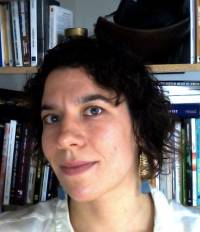- Members
- Resources
Sidebar
Table of Contents
Eva Boon
Postdoctoral fellow in the Bielawski lab
- 2012 Ph.D. The evolution of inter-genomic variation in arbuscular mycorrhizal fungi, University of Montreal, Canada
- 2005 M.Sc. in Evolutionary Biology, Groningen University, the Netherlands
Room 7056 Life Science Centre | Dalhousie University | Department of Biology | 1355 Oxford Street | Halifax NS B3H 4R2 | Canada
Research Interests
I am interested in the genetic boundaries between biological entities such as ‘species’, ‘communities’ and ‘individuals’. To address this question, I have used the tools and theory of metagenomics, molecular evolution, population genetics and phylogeography. An important addition is the philosophy of biology, which offers an essential outside perspective on how we think or do not think about boundaries.
In my present postdoctoral fellowship at Dalhousie University, I am looking at microbial communities (also called microbiomes) within humans and how to distinguish these microbiomes based on relative absence/presence of metabolic functions and taxa.
Microbes play an important role in our digestive system. The gut microbiome, which is the community of microorganisms that live inside our intestines, secures the breakdown of tough materials like cellulose and a functioning immune system. The gut microbiome has been shown to play a role in Intestinal Bowel Disease, obesity, diabetes and malnutrition-related diseases.
The bacteria in our guts are hard to study, but now we can gather molecular data about these microbes. To know what is happening in the gut at any time, it is vital to find out who is there and which genes they are carrying. We have the technology to collect this data, yet we do not have the methods to analyze it. For this, we need sophisticated computational approaches to help us find for example which genes, or groups of genes, are associated with a different microbiomes.
Our lab addresses these questions with new analytical methods developed in-house and we work together with health specialists to obtain and analyze the data. Once we know which microbial genes and processes make the difference between a healthy person and a patient, we might be able to restore our precious ‘little helpers’.
Publications
Boon E, Meehan CJ, Whidden C, Wong DHJ, Langille MGI, Beiko RG (2013) Interactions in the microbiome: communities of organisms and communities of genes. FEMS Microbiology Reviews Early View.
Hassan SED, Boon E, St-Arnaud M, Hijri M (2011) Molecular biodiversity of arbuscular mycorrhizal fungi in trace metal-polluted soils. Molecular Ecology 20(16) 3469-3483.
Boon E, Zimmerman, E, Lang BF, Hijri M (2010) Intra-isolate genome variation in arbuscular mycorrhizal fungi persists in the transcriptome. J. Evol. Biol 23(7): 1519-1527.
Boon E, Faure MF, Bierne N (2009) The Flow of Antimicrobial Peptide Genes Through a Genetic Barrier Between Mytilus edulis and M. galloprovincialis. J. Mol. Evol. 68(5): 461-474.
Bierne N, Tanguy A, Faure M, Faure B, David E, Boutet I, Boon E, Quere N, Plouviez S, Kemppainen P, Jollivet D, Moraga D, Boudry P and David P (2007) Mark–recapture cloning: a straightforward and cost-effective cloning method for population genetics of single-copy nuclear DNA sequences in diploids. Mol. Ecol. Notes 7(4): 562-566.
Hoarau G, Boon E, Jongma DN, Ferber S, Palsson J, Van der Veer HW, Rijnsdorp AD, Stam WT, Olsen JL (2005) Low effective population size and evidence for inbreeding in an overexploited flatfish, plaice (Pleuronectes platessa L.). Proc Biol Sci. 272 (1562): 497-503.
